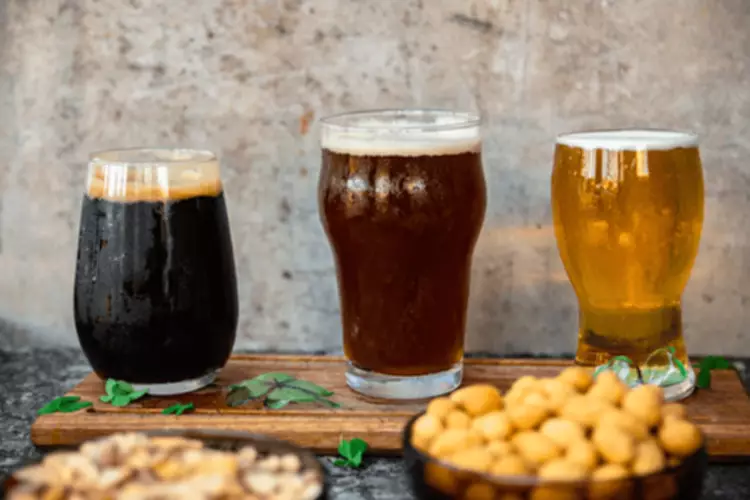To address these concerns and provide opportunities for improved patient outcomes there is a movement towards “harm reduction” by many addiction specialists. According to the CDC, there are approximately 80,000 deaths linked to excessive alcohol use every year in the United States. This makes excessive alcohol use the third leading lifestyle-related cause of death for the nation. Excessive alcohol use is responsible for 2.3 million years of potential life lost (YPLL) annually, or an average of about 30 years of potential life lost for each death. In 2006, there were more than 1.2 million emergency room visits and 2.7 million physician office visits due to excessive drinking.
Serotonin’s Role in Alcohol’s Effects on the Brain
- Warm colors indicate increased connectivity following dopamine depletion, whereas cool colors indicate decreased connectivity following dopamine depletion.
- Serotonin also interacts with dopaminergic signal transmission through the 5-HT3 receptor, which helps control dopamine release in the areas reached by VTA neurons, most notably the nucleus accumbens.
- All psychoactive drugs can activate the mesolimbic DA system, but the DA system is not the only system involved in the positive reinforcement network in the NAc.
Partial dopamine D2 agonists, therefore, offer the opportunity to treat the dysregulated dopamine activity during acute alcohol consumption as well as alcohol dependence. There was a trend toward reduced water consumption in males maintained on LD5053 and LD5001 that did not reach statistical significance. Water intake was significantly reduced in females maintained on both LD5001 and LD5053 compared to mice maintained on TL2019S.
The dopamine system and alcohol dependence
It also suggests that there may be a greater vulnerability to the effects of alcohol on brain health with old age. The impact of alcohol can be observed early on, moderate to heavy drinking during adolescence leads to observable differences to non-drinkers, but this is further confounded by risk factors to unhealthy drinking patterns and alcohol dependence. However, though MRI research will be important in advancing our understanding of the impact of alcohol on the brain we cannot infer harm solely from alterations to brain structure. GABA or GABA is the third neurotransmitter whose functioning is critical in understanding the genetics of alcohol addiction. Recently, two sub types of the GABAA receptor have come into the spotlight for showing what can possibly be a genetic predisposition to alcohol addiction.
Study shows promise of gene therapy for alcohol use disorder – OHSU News
Study shows promise of gene therapy for alcohol use disorder.
Posted: Mon, 14 Aug 2023 07:00:00 GMT [source]
Dopamine depletion procedure
Indeed, preclinical work emphasizes the role of NAc in stimulus-reward learning [17, 104], which extends to drug-related cues [22, 105,106,107]. This coherent FC relationship across AB tasks is also consistent with the significant correlations between behavioral measures of AB. Interactions between these two brain regions modulate responses to emotional stimuli [108,109,110] and may also underlie motivation for rewards [111].
People energized by alcohol are genetically predisposed to drink more heavily.
In addition, it is well substantiated that alcohol affects dopamine directly via the NAc and VTA as well as through indirect activation of the mesolimbic pathway via interaction with other reward‐related brain regions and neurotransmitters. Given dopamine’s pivotal role in the development and maintenance of alcohol dependence, medications targeting dopamine does constitute an important area of research. Although promising preclinical results, the majority of results from the clinical studies with dopamine‐acting medications have thus far been discouraging. The side effects profile of many of the evaluated compounds, including typical antipsychotic drugs, render them clinically unfavourable.
Underreporting of alcohol consumption is common, but an elevated GGT level or elevated liver enzyme levels can indicate alcohol use. Depression and anxiety exacerbated by life stressors often accompany excessive alcohol intake. The patient reported increased nighttime consumption of alcohol including vodka, wine, and beer of over 20 drinks per week for the past 2 years. Her laboratory profile showed an elevated fasting https://ecosoberhouse.com/ glucose level (106 mg/dL, formerly 98 mg/dL), an elevated gamma-glutamyltransferase (GGT) level, and iron deficiency anemia. For the McGill study, researchers recruited 26 healthy social drinkers (18 men, 8 women), 18 to 30 years of age. The higher-risk subjects were then identified based on personality traits and having a higher tolerance to alcohol (they did not feel as drunk despite having drunk the same amount).
4. Resting State Functional Connectivity
This information is critical for development of alcohol regulation and abuse prevention. Early case studies highlighted striking morphological anomalies, most notably thinning of the corpus callosum and enlargement of ventricles, but subsequent radiological investigations have highlighted there is considerable variability in the impact of FASD on brain development [58]. Quantitative analyses of brain macrostructure in FASD have repeatedly found lower grey and white matter volume along with increased thickness and density of cortical grey matter [59]. Crucially, findings have found no morphological differences in the occipital lobe, suggesting that not all brain structures are affected equally.
Effects of Serotonin Uptake Inhibitors

The physiological importance of the mesocorticolimbic dopamine system is highlighted by its evolutionary stability and conservation in primitive invertebrates, such as, flatworms, all the way up to primates, including humans. It was identified serendipitously in the 1950s when Olds and Milner found that rats self‐administer alcohol and dopamine electrical currents into certain specific brain regions [9]. These findings were later corroborated by studies showing that rats favoured electrical stimulation in the same specific brain regions, over natural rewards [10]. The primary neurotransmitter regulating the rewarding sensation was determined to be dopamine [11].

© 2024 Harvard Health Publishing® of The President and Fellows of Harvard College
For example, the interaction of serotonin with one type of receptor stimulates the formation of small molecules (i.e., second messengers) within the cell. Second messengers interact with other proteins to activate various cellular functions, such as changes in the cell’s electrical activity or in the activity of certain genes (see figure). These changes can result either in the inhibition or the excitation of the signal-receiving neuron, depending on the cell affected. Through these mechanisms, serotonin can influence mood states; thinking patterns; and even behaviors, such as alcohol drinking. Dopaminergic neurons are activated by stimuli that encourage a person or animal to perform or repeat a certain behavior (i.e., motivational stimuli).
- These effects are found in prefrontal, cingulate, and temporal regions as well as the corpus callosum and may reflect an acceleration of typical age-related developmental processes similar to what we have described in adults with alcohol dependence.
- However, subsequent double‐blind placebo‐controlled trials found no effect on relapse or related behaviours [173, 174].
- The brain uses billions of neurotransmitters to manage everything from our breathing to our heartbeat to our digestion.
- In humans, for example, the levels of serotonin metabolites in the urine and blood increase after a single drinking session, indicating increased serotonin release in the nervous system (LeMarquand et al. 1994a).
- It is a drug which is so commonly available in so many different forms and guises that it is often hard to even look at it in that way.
- Similarly, we did not see any significant changes in mRNA levels of the nAChR subunits.

